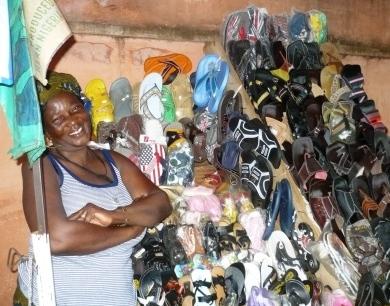Monday, December 15th, 2008...1:23 am
Awesome Website Bro: Kiva.org
I’ve been telling anybody that will listen that Digital, Energy/Climate, and Global business are the three biggest growth opportunities in the world right now and for our generation. No matter how bad this recession gets, or how long it drags out, at some point we will come out of it. When we do, the innovation, growth and opportunity in these three spaces will be remarkable.
Kiva.org is a company that beautifully leverages two (digital and global) of these trends. Kiva describes itself as “the world’s first person-to-person micro-lending website, empowering individuals to lend directly to unique entrepreneurs in the developing world.” The site needs to fix that description, because what actually happens on the site is much cooler than that. Kiva allows you to provide micro-credit (as little as $25) to help entrepreneurs from around the world (especially in poor third-world nations) to grow their own local businesses.
Today, I mad my first loan to a women named Dolibe Tayede. Dolibe is a 56 year-old divorced mother of three children who owns a Shoe Shop stand in Agoe, Togo. She is asking for a $950 loan to buy more shoes to sell. Thanks to twelve investors in the US she is about 40% of the way towards receiving the loan. She promises to repay the loan over 12 months.
I decided to grant a loan to Mrs. Tayede (over a South American scarfer) because the Litvack’s, of course, are really a family of cobbler’s and have quite a fondness for the foot business. Furthermore, she has one heck of a radiating smile. If you’re interested to see who else is looking for funding you can search over 1370 current loan applications by gender, sector or region of the world.

Kiva’s mission is based on the financial idea of microfinance, lending small amounts of money to the poor. Granting poor or underdeveloped communities access to savings, credit and lending allow them to make great strides towards economic independence and improve life for themselves, their family, and their community and ultimately lead them out of poverty. In 2006, Muhammed Yunus won the Nobel Peace Prize for creating the concept of microcredit and founding the Grameen Bank in Bangladesh.
The loans are facilitated through microfinance institutions that work as local “field partners”. The field partners also provide updates on the progress the loans help enable. Like with any loan, there is risk of default. In the over $17 million dollars in loans on Kiva, the default rate is about 3.1%. The loans high yield account for this risk. Here are some stats on the risk.
It’s mind boggling that you can lend money to people around the world and so greatly effect their their future from the comfort of your own couch. The fact that you can also make money is even more fascinating.
The Internet is such a powerful connector. Facebook connects people and Wikipedia connects information and Sportsvite connects recreational athletes. Kiva connects people in quite an unlikely fashion, but it is such a world-changing concept that it’s almost impossible not to be part of once you check it out.
I can’t wait for Mrs. Tayede to start slinging more shoes and soon hope to reinvest my profits to provide even more micro-loans.
–
You might have recently read Joel Stein’s column about Kiva in Time Magazine. While Joel’s piece is more witty, cleaver and entertaining than I could ever hope to craft, I will say I’ve been on the Kiva bandwagon for quite some time. Perhaps his article pushed me to write this review though and I do look forward to reading his column each week so did want to shout it out.